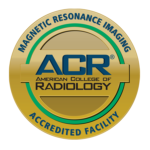Imaging Services at IMI
Intermountain Medical Imaging offers many diagnostic imaging procedures in calm and comforting environments. These procedures include MRI, CT, Ultrasound, X-Ray & Fluoroscopy, and Interventional Radiology.
Medical imaging uses sophisticated technology to capture images of the internal structures and functions of the human body. These images are generated by directing a variety of different energy sources into the body, that can not be felt by the patient, and are then viewed on state-of-the-art computer systems where a medical diagnosis can be made.
At IMI, a technologist or radiologist will perform your exam or procedure and then one of our specialty-trained radiologists will interpret the exam and send a report to your physician.
Click on the exam of your choice for more information about how the procedure works and the preparation that is needed. Contact us if you need any additional information.

